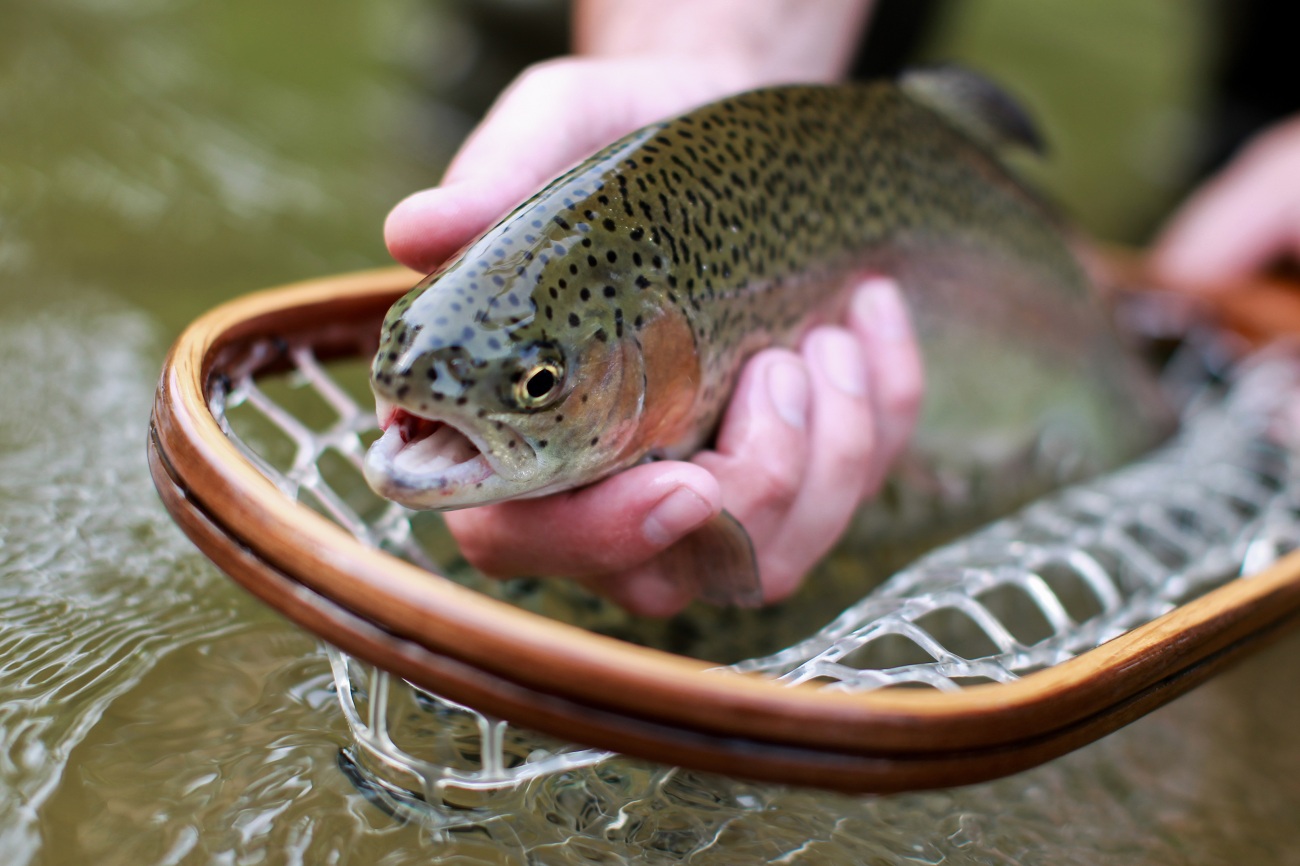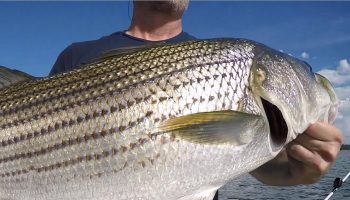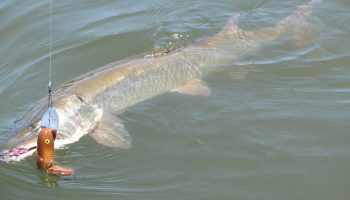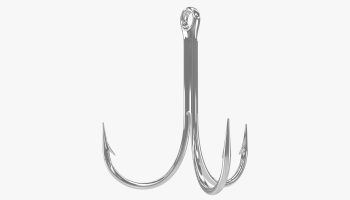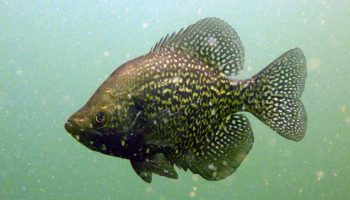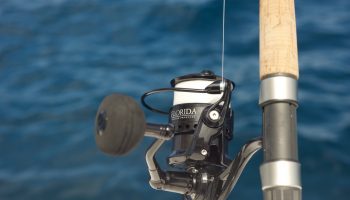Trout is a term used for several types of fish that are a part of one of three genera: oncorhyunchus, salmo or salvelinus. They live in freshwater, but some trout do spend time out in the ocean and return to freshwater to spawn, just like salmon, which trout are closely related to. Several common types of trout are brown trout, lake trout, rainbow trout and steelhead. A trout’s diet usually consist of other fish and aquatic invertebrates. When a trout reaches over 12 inches they’ll usually only feed on smaller fish. Trout are a very popular game fish and many state wildlife agencies stock lakes, ponds and streams with trout for anglers to catch.
You can locate trout in lakes and streams with cool water. The ideal temperature range is 50 to 60 degrees. Juvenile trout can also be known as fry, troutlet and troutling. They tend to mature around 2 to 3 years of age. The lifespan on trout depends on the species. For example, a rainbow trout can live up to 7 years while lake trout can live for several decades. The color variation of trout varies greatly and is dependent on the type of trout you’re looking to catch. Trout are not only popular with anglers, they are also popular on the dinner table. Trout, along with its close relatively salmon are a common staple in many American’s diets.
What To Use When Trout Fishing
Since rainbow trout grow to about 12 inches, you are safe even with ultralight tackle. A standard trout fishing rig would include a spinning reel, 4-8 lb test flurocarbon line and a light or ultralight action rod.
There are two big rules to remember when trout fishing: 1. Powerbait will only work on stocked trout (most likely), and 2. Most trout over a foot long cut flies and insects out of their diet. These won’t make or break the bite, but they will affect the type of trout you hook into.
Powerbait (or trout marshmallows, or any dough bait substitute to imitate pellets) is simply not a good choice for natives. Stocked trout grow up in hatcheries and on farms where they are fed pellets. Dough baits like Powerbait are created solely to imitate those pellets in sight, texture, and scent. If you are fishing for natives, they likely have no idea what that glob of dough floating in front of them is. While you may get a bite out of curiosity, it is unlikely that they are conditioned to eat those pellets and will lay off your line.
If you’re looking for BIG trout (steelhead or larger adults of the bows, browns, and brooks), avoid fly, mayfly and tiny haired imitators. While they may snack on zooplankton, flies or other tiny insects occasionally, they almost exclusively eat smaller fish, worms, shrimp, and larger insects when they are over 1 foot in length. To imitate those common trout meals when trout fishing, here’s what you should throw.
Counting Down
Another mistake I notice a lot of anglers make is that they begin to reel in the spinner as soon as it hits the water. If the trout are feeding near the surface, you’ll be fine; but this is not always the case. If the trout are holding deeper in the water column, chances are it will be a very slow day.
The solution? Count your lure down. Depending on the shape and size of the spinner, a good rule is that it will sink one foot per second. After you make your cast, wait and count. This will give you an idea of how deep your lure is. I will usually reel in one cast on the surface, then let the next one sink down for two counts, then 4, 6, 8 counts and so on. Eventually, you will know where the bottom is. This will help you focus on the entire water column.
All right, and now for some advice that might sound silly at first. I count out loud. I don’t scream it, but loud enough so I can hear myself. Why, might you ask? Well if you catch a fish on an “8” count, wouldn’t it make sense to count down to eight again the next time? Of course! Sometimes though, in the heat of the battle with the trout, I will forget what number I was at. I find counting out loud helps me keep track of where I was. Maybe this won’t be an issue for you. Just thought I’d throw it out there.
So there you have it, between fan casting and counting down, your lure you will be covering much more of the water in front of you, and reaching more trout. You’re already on your way to being a much more effective spinner fisherman!
Other Rainbow Trout Tips
If I am fishing in a lake with which I am unfamiliar, I usually start at an end of the lake that has a stream flowing in or other moving water. It seems those spots always cause fish to congregate. I usually set up one rod with a floating worm, cast that out, put a strike indicator of some sort, put it in a rod holder and then fish around that spot with a Kastmaster or other lure for a while. If I get no hits on either the worm or the lure in about 1/2 hour I go to another promising looking spot. That approach seems to work pretty well all the places I have fished. Of course, I’m always on the lookout for fish activity such as trout rising for insects or chasing baitfish on the surface, birds diving to pick off baitfish, etc. If the water is very clear and I can see the fish I switch to the plastic jig in a natural color. I put it in front of the fish I can see and see how they react to different types of twitches. If I see a trout become interested in a certain retrieve, I will try that in other spots, even if the trout I could see does not ultimately eat. Many times it is harder to catch the fish that you can see, especially in still water, because they can see you.
When fishing in a river I like to concentrate on slower moving pools and spots of slower moving water behind large rocks. Trout don’t sit in the fastest part of the current; that would tire them out. They wait in ambush in spots outside the current and dart out to eat things that float by. Try to make your bait or lure float by in the same way that a stray bug or worm or fish might. They have to make a split second decision on whether to eat it or not and are generally easier to catch than trout in lakes as a result.

